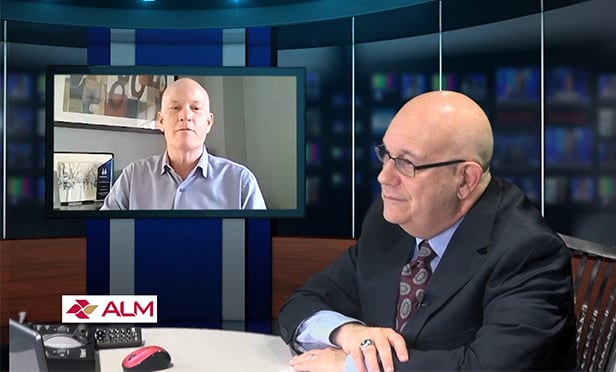According to PSE&G's Rachael Fredericks, who spoke at an event yesterday at the Forsgate Country Club here, sponsored by the Economic Development Association of New Jersey, energy efficiency creates jobs, of which the Garden State is in sore need. For the most part, energy efficiency upgrades are initiatives of which nearly everyone can partake, such as updating lighting fixtures and heating units. "Solar and wind are sexy, but people need to recognize that before these upgrades take place a simple energy efficiency audit is key," she said.
For its part, PSE&G is offering a slate of efficiency programs with big economic benefits; all of which were approved in July 2009. The utility also offers an on-bill repayment option, which should lead to positive cash flow for customers, and picks up 80% of the tab.
To start, PSE&G's Residential Whole House Efficiency program targets customers living in municipalities containing Urban Enterprise Zones; the utility has invested $10 million in this effort. Multifamily Housing is also on tap, with PSE&G investing $19 million.
But commercial and industrial is where the utility plans to put most of its money. The Direct Install program for small businesses saw an investment of $20 million. This includes a walk-through audit and installation. The program, again, is targeted towards customers in UEZ zones, and applies only to those with a usage of 200 kilowatts or less per month. According to Fredericks, the customer pays nothing out of pocket, with the 20% billed over two years in equal payments. The Government Facilities/Non-Profits program, which also received $20 million, is similar to the Direct Install program, but offers some flexibility on the 200 kilowatt usage requirement.
The largest PSE&G investment went to the Hospital Efficiency program, which received $60 million, geared towards new and existing in-patient facilities, while newer pilot programs include Data Centers ($10 million) and the Building Commissioning program ($2 million).
Programs aside, how much are building owners really saving? According to Fredericks, PSE&G worked with an unnamed church in Newark and cut its annual costs by $41,000. The total project was $281,765, $225,412 of which the utility picked up, while the church's price tag was $56,353, leaving the owner with a monthly payment of $2,348 over 24 months. More importantly, the landlord's monthly reduction on its utility bill was $3,415, leading to a positive cash flow of $1,067. "So why wouldn't anyone not do this?," asked Fredericks.
But other initiatives aren't quite as cut and dry. Sexy solar, for instance, requires a larger investment, though the industry is highly incentivized. And while it certainly cuts costs over the long run, solar panels are only guaranteed for 25 years, according to John Drexinger of Protech Energy Solutions, which has worked closely with Whitman Cos. to develop and build efficient energy project in the state. "Technology is driving the industry, but it's only increased about 5% since the 1970s so we're still using crystalline panels," he noted.
While solar means in-state jobs, the manufacturing of panels tends to occur abroad. In fact, Drexinger said, there is only one company in New Jersey that manufactures panels, "but no Garden State company has ever purchased panels from them and they're now moving to New York." In the state's defense, he added, the company was using outdated technology, and there are other solar manufacturers eyeing New Jersey as a potential headquarters.
Despite the upfront costs involved, there are a number of New Jersey businesses that have taken the solar plunge. Federal Express, for one, is starting a project in Edison, which will feature the largest solar panel on one roof, and Morristown Water Treatment has installed a ground-mounted PV system.
Despite some steps in the right direction on the part of the state, Drexinger noted that New Jersey is about 50% behind on its solar savings goal, which is in the 170 to 180 megawatt range. "To build 80 megawatts of solar in a year, we need 1,200 to 1,500 workers," he said.
One area of renewable energy that has been catching on, particularly in Southern New Jersey, is cogeneration and independent power production. Cogeneration, also referred to as CHP, is essentially the sequential production of two energy outputs from one fuel input, meaning it's best applied to industrial processes such as refining and manufacturing; urban or commercial district energy systems; and large commercial uses, from casinos and colleges to hospitals.
But why make use of CHP? According to Joseph Scheufele of South Jersey Energy Solutions/Energenic, "a typical utility coal-fired power plant is 30% to 40% energy efficient, while optimized cogeneration leads to a 60% to 80% efficiency rate." And while the US still gets 49% of its power from coal, Scheufele noted that this number will probably start to decrease when the national cap and trade policy is put in place, likely around 2012, which should drive coal prices up.
Interestingly enough, cogeneration has been around for decades, "but we've actually made it worse," Scheufele said. "It was much more effective before everyone moved to the suburbs, at which point electrical lines were installed and a good deal of energy was lost." But this may soon change, with the advent of the microgrid, which essentially means no more lines and greater efficiency.
However, Scheufele cautioned, there is "no single solution to the state's energy issues. It needs to be a combination of initiatives. And remember, it's easier to conserve a unit of energy than it is to create one."
Want to continue reading?
Become a Free ALM Digital Reader.
Once you are an ALM Digital Member, you’ll receive:
- Breaking commercial real estate news and analysis, on-site and via our newsletters and custom alerts
- Educational webcasts, white papers, and ebooks from industry thought leaders
- Critical coverage of the property casualty insurance and financial advisory markets on our other ALM sites, PropertyCasualty360 and ThinkAdvisor
Already have an account? Sign In Now
*May exclude premium content© 2024 ALM Global, LLC, All Rights Reserved. Request academic re-use from www.copyright.com. All other uses, submit a request to [email protected]. For more information visit Asset & Logo Licensing.








